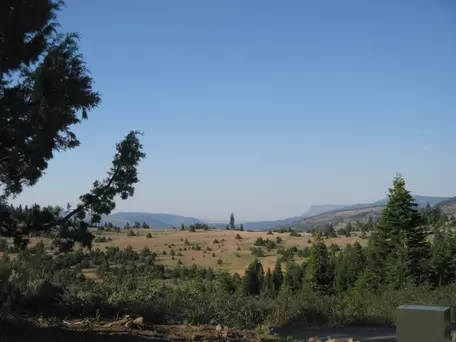Initial Publication Date: October 25, 2010
Ideas for Teaching about Paleoclimate

×
Calibrating Radiocarbon Ages - Designed for an upper-level undergraduate to graduate course, this activity idea uses the Neotoma database and CALIB program to demonstrate the differences between radiocarbon and actual ages and to help students learn why these differences exist.
Calibrating the Younger Dryas - Designed for an upper-level undergraduate course in Quaternary studies, this activity is a hands-on investigation involving the need for evaluating radiocarbon ages, the actual act of calibrating radiocarbon ages, and the application of these calibrated radiocarbon ages to the Younger Dryas (YD), an Abrupt Climate Change.
Climate, Ecoregions, and the Mammals Who Live in Them - Designed for the high school or undergraduate level, this activity uses the Smithsonian website for North American mammals and Faunmap to teach students about different ecoregions in the US and their corresponding climatic characteristics, adaptations animals within these ecoregions have made to enable them to live there, and how changing climate has resulted in changing mammal biodiversity.
Continental- and Regional-Scale Vegetation Change in North America over the Last 20,000 Years - Designed for an introductory level course for non-majors, this jigsaw activity utilizes the Thompson Tree Atlas, PollenViewer, and the Neotoma database and involves students meeting in "taxon teams" with all members examining data from climate one proxy (e.g. plant pollen). Then students reassemble into groups with a member from each taxon team and develop a history of plant distribution and climate interpretations. Finally, the whole class comes together to discuss what the patterns mean about climate change, particularly in their local area.
Mammoths and Mastodons - Designed for an introductory-level geology course for first-year students, this activity uses a combination of lectures and a lab to teach students about mammal biogeography and paleoclimate with assistance from Faunmap, Neotoma, and Pollen Grapher.
Using Soils to Reconstruct Bio-climates - Designed for the introductory level, this activity idea asks students to use raw data to assemble a diagram of the distribution of C3, C4, and mixed C3/C4 plants, to make observations about their diagram, and to interpret the shifts between forest and prairie through time without radiocarbon dates provided.
What do Squirrels know about Climate Change? - Designed for the introductory level, this activity idea involves students using members of the squirrel family to determine habitat shifts related to climate change and incorporates the use of the Smithsonian Guide to Mammals and Miomap.
Related Links
Paleoclimate visualizations - a spectrum of visualizations and supporting material that can be used effectively to teach students about paleoclimate through geologic time from On the Cutting Edge.
Climate Proxies - an informational page on how proxies are used to infer past climate with references and resources from the Microbial Life Educational Resources Project.
Paleoclimate Activities - a browsable collection of activities that involve paleoclimate from across the SERC sites.
Paleoclimate Vignettes - Vignettes are stand-alone, illustrated electronic case studies that teach about geomorphology, surface processes, and/or Quaternary history; this set of vignettes exclusively features paleoclimate.
Course descriptions involving paleoclimate - a browseable collection of course descriptions that involve paleoclimate from across the SERC sites.






